There were around a quarter of a million Japanese permanent residents living overseas in 1989, the first year of Heisei, just before Japan’s economic bubble burst. Now, as of 2022, there are over double (+126%) the number – 557,034. It has been a steady increase, with particularly strong growth in 2006-8 and 2013-2015.
The number of Japanese nationals on long term visas has also risen, but not to quite such an extent – from 340,000 to 751,000 (+120%) and since 2020 the number has dropped. Long term visa holders are likely to be corporate expatriates and students on longer courses, so this decrease could partly be explained by the pandemic, but there does not seem to be any sign of recovery by the end of 2022, even though the severity of the pandemic had faded by then.
Country by country, the picture is more patchy. The USA is still the biggest host of Japanese nationals (419,000) – nearly a third of the Japanese nationals overseas, but this has declined 6% since 2018. The number of Japanese nationals in China, the second largest host, has dropped 15% over the same period. The UK, 6th largest host, has 7% more Japanese nationals than in 2018 whereas Germany (8th) has 7% fewer Japanese nationals and France (10th) 8% fewer. Australia, Thailand and Canada (3rd, 4th and 5th respectively) have also seen increases.
By city, Los Angeles, Bangkok, New York, Shanghai, London, Singapore, Sydney, Vancouver, Honolulu and Hong Kong are the 10 largest hosts. San Francisco has dropped out of the top 10 and been replaced by Honolulu.
Breaking it down by visa category shows that overall in Europe the number of Japanese nationals in the 17 biggest hosts rose 17% from 2012 to 2022 to over 216,000. But the driver behind this has been the number of nationals who are permanent residents. This rose 80% from 2012 to 2022 to over 90,000 people, with a particularly marked increase 2021-2. The number of people on long term visas in Europe has actually fallen by 13%, to 126,000.
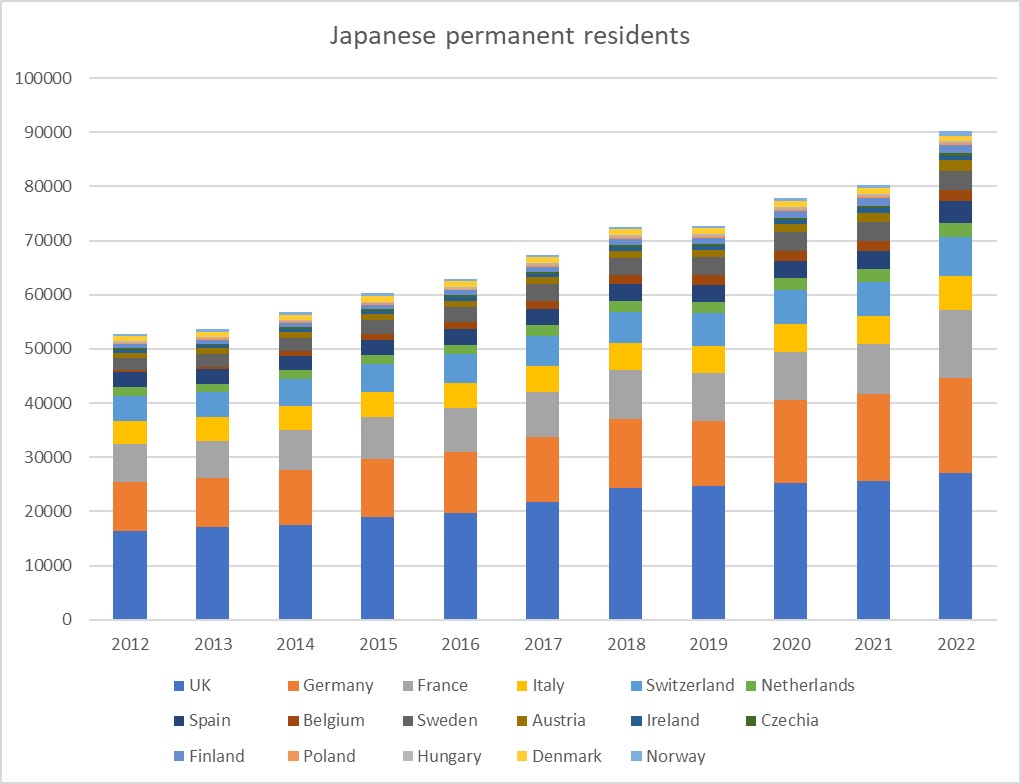
The UK has the largest number of Japanese permanent residents – 27,179 – up 77% on 2012. Germany has nearly double the number of Japanese permanent residents it had in 2012 – to 17,496. France is the third largest host with 12,572 permanent residents, up 95% on a decade ago. Belgium has tripled the number of permanent residents and Austria doubled it.
It is hard to know what the drivers are behind Japanese taking up permanent residency in Europe. Obviously one factor is marriage to a local person and having a family. The stereotypical view would be of a Japanese woman marrying a European man – often after having come to Europe to study and work, having perhaps despaired of the traditional education, career and marriage prospects available to women in Japan. There does seem to be an element of that in that there are 1.6 Japanese women permanent residents for every man, up from 1.1 in 1989.
The ratio of permanent to long term residents in the UK and Germany is around 2:3, whereas in the USA it is around 50/50. In Australia and New Zealand is more like 3:2. In Brazil and Argentina over 90% of residents are permanent.
Permanent residency may also be the only available option if a Japanese person wants to stay in their new home country, but does not want to lose their Japanese citizenship. As this editorial in the Asahi newspaper explains, it has long been a source of contention in Japan that dual citizenship has not been permitted. The eight plaintiffs in a recent court case who wanted to contest this said that they took up citizenship of another country in order to maintain their business in that country, or to take public office.
Japan does seem out of step with the majority of countries in the world – 70% of countries allow multiple citizenship. It is also an open secret that many Japanese nationals abroad do actually have dual or multiple citizenships, as there is no mechanism for the Japanese authorities to become aware of this. The data above comes from the Japanese Ministry of Foreign Affairs, and is dependent on Japanese nationals registering with their local embassy. It is only when inheritance, tax and other matters have to be dealt with that multiple citizenship comes out in the open as issue. The true number of Japanese nationals (current and former) in Europe is likely to be much larger.
The charts below attempt to show the different trends in the main countries in Europe which host Japanese nationals. There are some obvious anomalies, which may be explained by changes in citizenship laws and visa regulations in each European country. It’s also notable that Switzerland has long been a major host of Japanese permanent residents whereas, by contrast, the Netherlands would seem to be much more of a corporate expatriate destination.
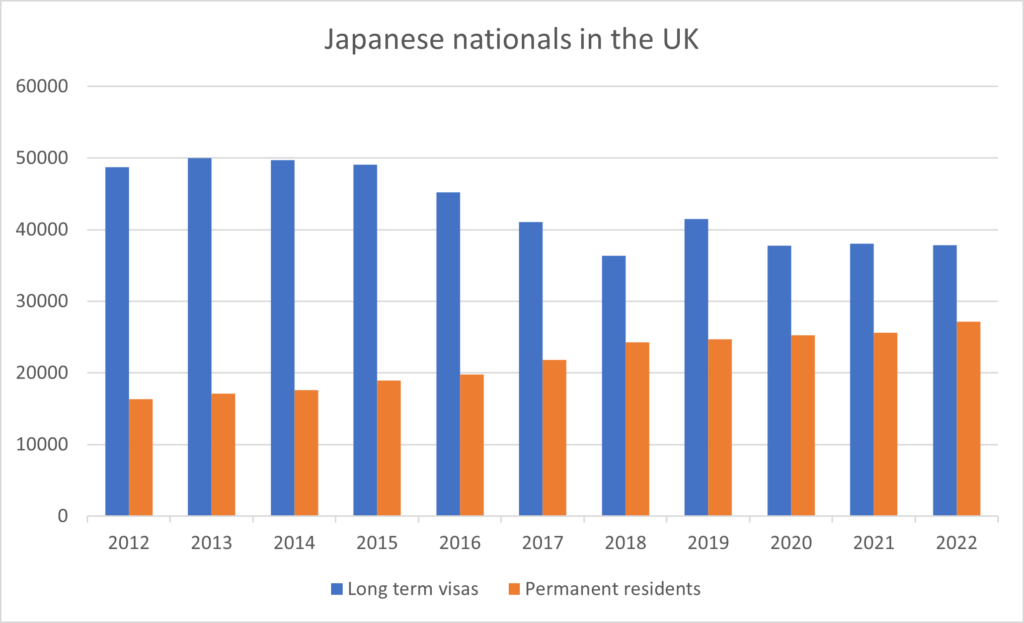
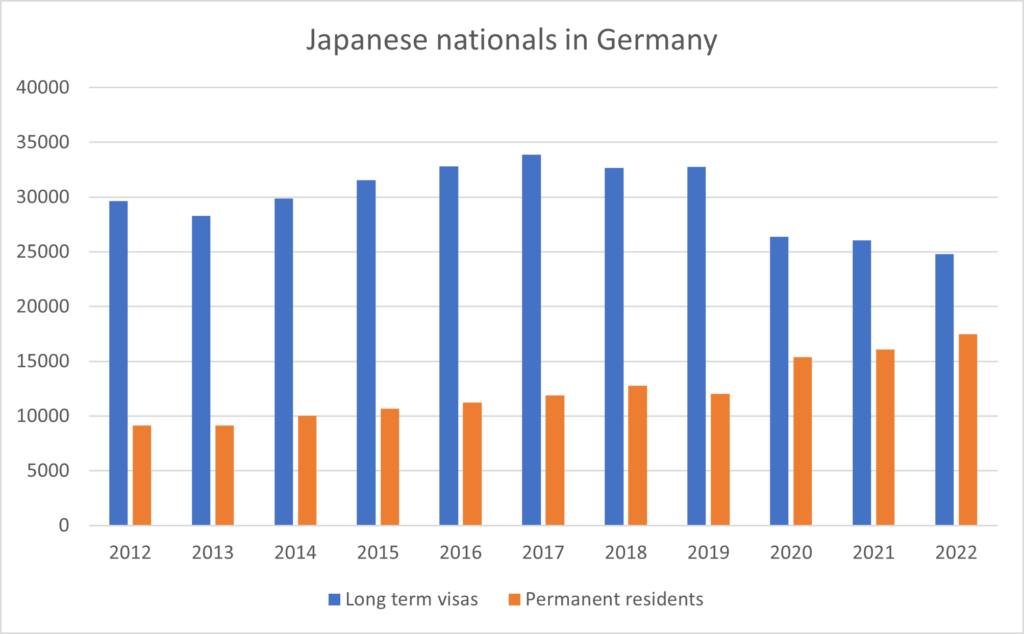

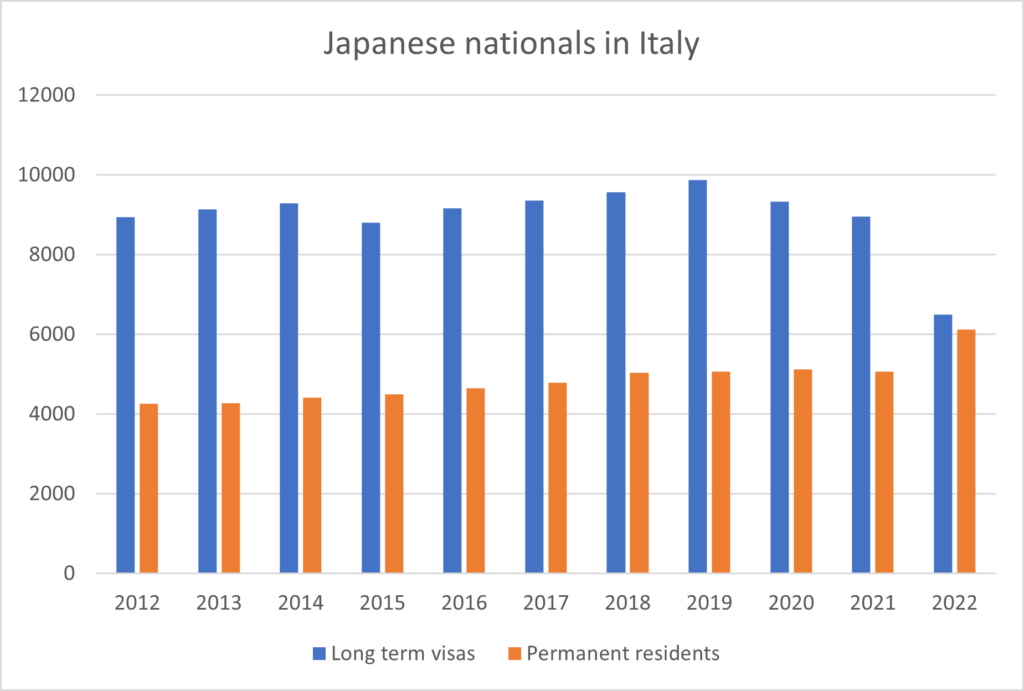
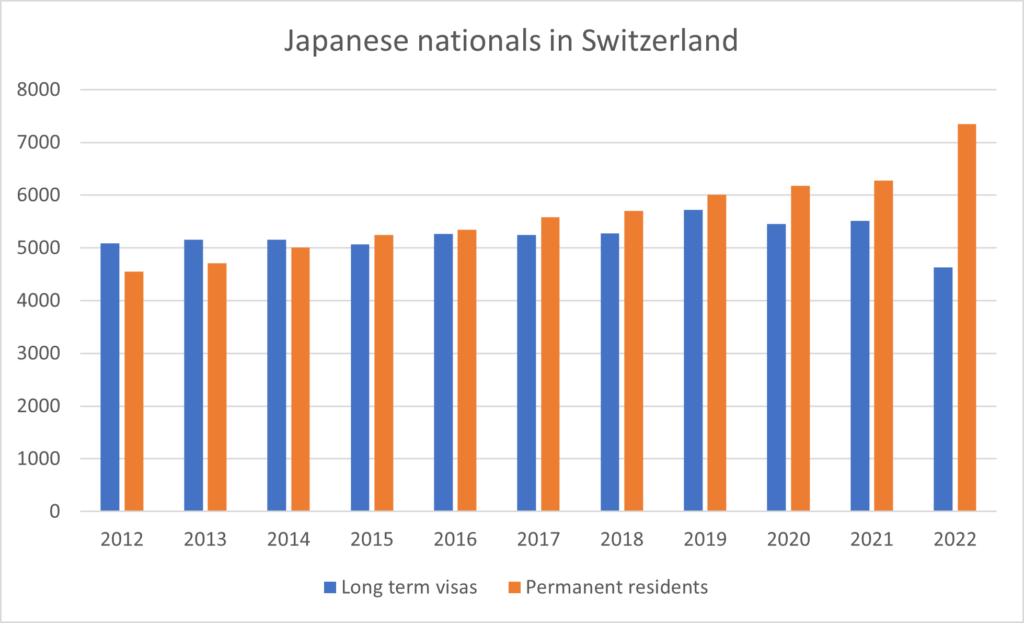
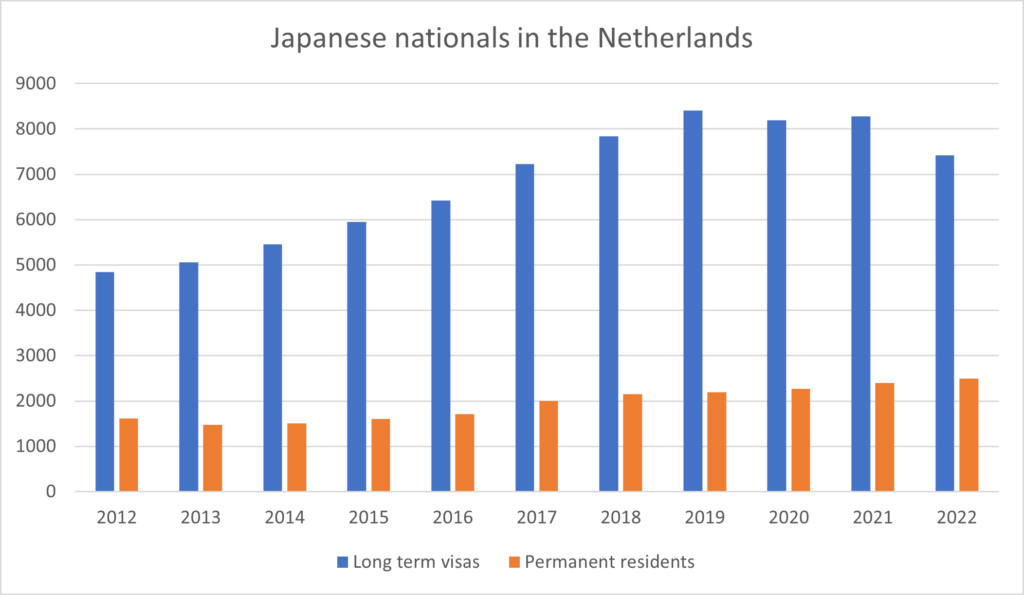
For more content like this, subscribe to the free Rudlin Consulting Newsletter. 最新の在欧日系企業の状況については無料の月刊Rudlin Consulting ニューズレターにご登録ください。
